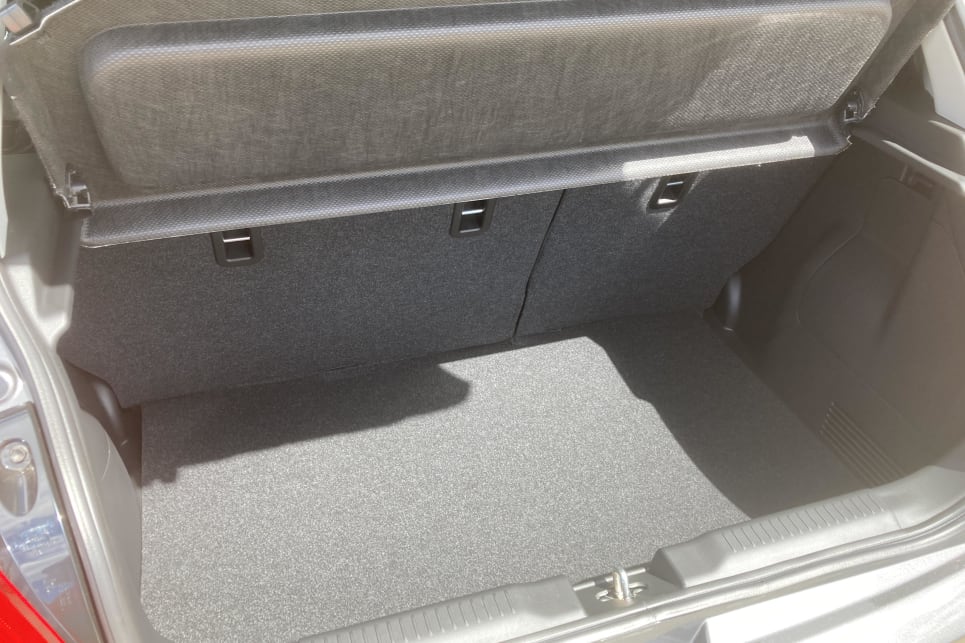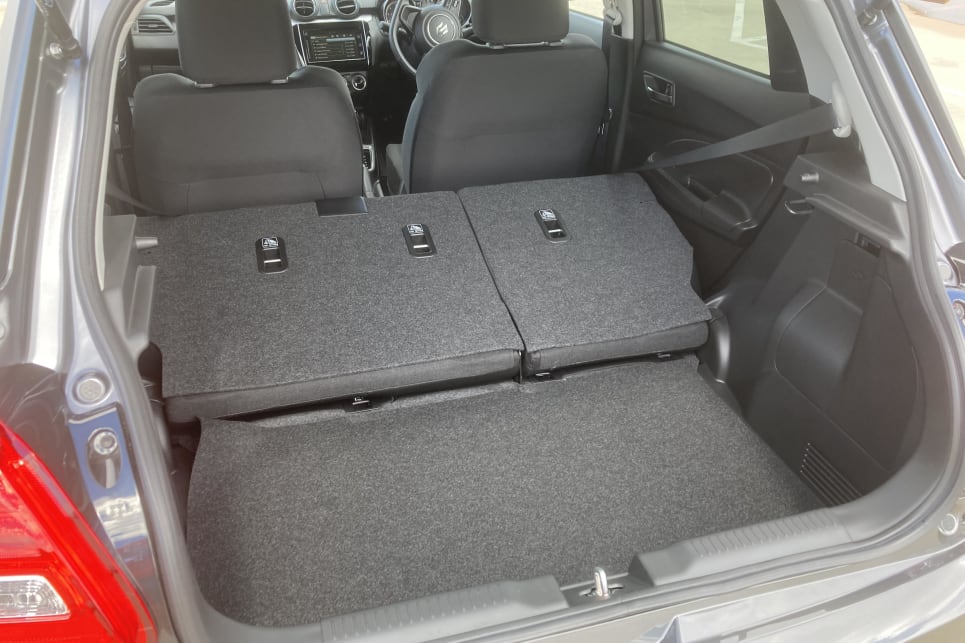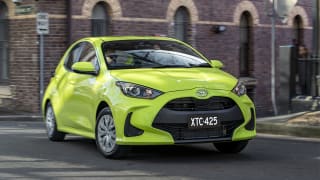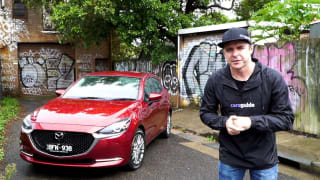The Swift’s bandwidth is impressive.
In the cheap seats is the brilliant base GL Navigator 1.2 litre from $18,990 (before on-road costs), the Sport 1.4L turbo from $26,990 is a pint-sized pocket rocket, while the GLX Turbo from $25,290 sits somewhere in between.
Powered by a 1.0-litre three-cylinder turbo and mated solely to a six-speed torque-converter auto, it represents up-spec sophistication in a small yet salubriously specified package. That’s the pitch, anyway.
Direct rivals include the all-new Toyota Yaris Ascent Sport (from $23,630), recently made-over Kia Rio GT-Line ($23,990), Mazda 2 G15 GT (from $24,990), Volkswagen Polo 85TSI Style (from $25,690), Skoda Fabia 81TSI Monte Carlo (from $25,990) and – at a stretch – the Citroen C3 Shine (from $28,990). In this light, the GLX Turbo’s pricing is tight.
So, what’s changed for MY21? You may spot the refreshed grille, front bumper, alloys and colour palette, as well as the inclusion of auto-up/down windows, heated side mirrors, blind-spot monitoring, rear cross-traffic alert and rear parking sensors, but we’re most excited over the newly-added digital speedometer. Finally!
That’s about $2K’s worth of extra kit, though the GLX Turbo’s price has jumped $2300. Any which way you look at it, it now costs more.
Still, the safety/convenience roll call is long, with autonomous emergency braking (AEB), lane departure warning with steering assist, forward collision warning, adaptive cruise control, four-wheel disc brakes, six airbags, anti-lock brakes with electronic brake-force distribution and brake-assist, and stability/traction controls all present.
Keeping with luxury themes, the GLX Turbo also ushers in telescopic/tilt steering adjustment, paddle shifters, sat-nav, reverse camera, Apple CarPlay/Android Auto support, Bluetooth audio and telephony connectivity, electric-folding/heated door mirrors, keyless entry/start, climate control air-con with pollen filter, six-speaker audio and 16-inch alloy wheels, making it a decently-equipped supermini for the money.

About the only obvious omissions for the 2020s go-getting urbanite is wireless phone charging and USB-C ports, though a single USB-As outlet (as well as a 12V and AUX-IN access for your old iPod) is fitted. Phew!























